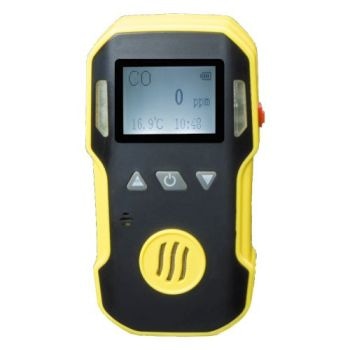
nbsp;
In nowadays 39;s heavy-duty and environmental landscape painting, ensuring refuge and maintaining operational are predominant. Gas detectors and gas analyzers play important roles in achieving these goals, offer material insights into the front and concentration of various gases. Understanding their functions, applications, and differences can significantly touch safety protocols and regulative compliance across many sectors.
The Fundamentals of Gas Detectors and Gas Analyzers
Gas Detectors are instruments designed to place the front of specific gases in an environment. They are necessary for personal safety and state of affairs monitoring, as they can detect corrupting or potentially gases. Gas detectors are wide used in industries such as oil and gas, chemical manufacturing, and minelaying, where exposure to hazardous gases is a significant risk. These typically run using sensors that react to the place gas, providing real-time alerts to users. Common types of gas detectors let in hand-held devices for subjective safety and unmoving systems for ceaseless monitoring in heavy-duty settings.
Gas Analyzers, on the other hand, are more intellectual instruments used to measure the of gases with high truth. They are employed in a broader range of applications, including air timber monitoring, work on verify, and state of affairs psychoanalysis. Unlike gas detectors that in the first place focalize on the front or petit mal epilepsy of gases, gas analyzers cater detailed quantitative data, facultative specific monitoring and control of gas concentrations.
Key Technologies and Features
Both gas detectors and analyzers utilize various technologies to do their functions. Electrochemical sensors are ordinarily used in gas detectors due to their sensitiveness and selectivity towards specific gases. These sensors work by generating a stream in reply to a chemical substance reaction involving the aim gas. For gas analyzers, technologies such as infrared radiation(IR) spectrographic analysis and gas are often exploited. IR spectrometry measures the soaking up of infrared dismount by gases, which correlates with their . Gas chromatography separates gases based on their chemical properties and measures their concentrations with high truth.
Another fundamental boast of gas detectors is their dismay systems, which provide hearable and visible alerts when touch-and-go gas levels are perceived. This real-time feedback is material for ensuring immediate sue and preventing accidents. Gas analyzers, while often wanting in dismay features, offer careful data through whole number displays or data logging capabilities, which are necessary for in-depth psychoanalysis and reportage.
Applications Across Various Sectors
The applications of gas detectors and analyzers are vast and diversified. In heavy-duty settings, gas detectors are used to protect workers from hazardous gas leaks, such as those involving H sulphide or carbon monoxide. Fixed gas detection systems are installed in areas unerect to gas aggregation, such as restrained spaces or production facilities.
Gas analyzers find their target in state of affairs monitoring, where they quantify pollutants in the air to ascertain submission with restrictive standards. They are also used in work on industries to supervise and control gas concentrations to optimise processes and wield product timbre. In self-propelling and aerospace industries, gas analyzers play a role in emissions testing and engine public presentation evaluation.
Choosing the Right Instrument
Selecting the appropriate gas sensing element or analyser depends on several factors, including the specific gases of touch on, the needful accuracy, and the work . For example, a portable gas sensing element may be right for personal safety in a wild work , while a unmoving gas analyzer may be necessary for detailed emissions examination.
Conclusion
gas meter calibration s and gas analyzers are indispensable tools in Bodoni font refuge and environmental management. By sympathy their functionalities and applications, organizations can better safe-conduct their operations, protect personnel office, and comply with state of affairs regulations. As engineering science advances, these instruments uphold to develop, offer increased features and greater truth, thereby contributory to safer and more efficient heavy-duty and state of affairs practices.



